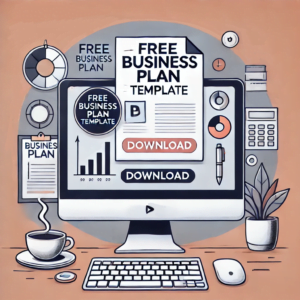Creating a business plan is essential for any entrepreneur looking to start or grow their business. A well-crafted business plan guides you through each stage of starting and managing your business. It can help you secure funding, attract partners, and outline your path to success. Here’s a simple, step-by-step guide to writing a business plan without any confusing jargon.
1. Executive Summary
The executive summary is the first section of your business plan, but it’s often best to write it last. This section should provide a brief overview of your business, your mission statement, what product or service you offer, and the basics of your growth plans. Think of it as your business’s elevator pitch.
Example:
“Our business, GreenPro, is dedicated to providing eco-friendly household cleaning products. Our mission is to make homes healthier while protecting the environment. We aim to grow our market share by 20% over the next two years.”
2. Company Description
In this section, describe your business in more detail. Explain what your business does, who your target customers are, and what sets you apart from the competition. Highlight your business’s strengths and what makes it unique.
Example:
“GreenPro offers a range of biodegradable cleaning products that are safe for families and pets. Our target customers are environmentally conscious homeowners. What sets us apart is our commitment to sustainability and the use of only natural ingredients.”
3. Market Analysis
Show that you have a deep understanding of your industry, market, and competitors. Include information about your target market, such as demographics, preferences, and buying behaviors. Analyze your competitors, identifying their strengths and weaknesses and how you plan to compete.
Example:
“Our target market consists of homeowners aged 25-45 who are interested in sustainable living. The eco-friendly cleaning market is growing rapidly, with a 10% annual increase in sales. Our main competitors are EcoClean and GreenHome, but our unique formulation and packaging give us a competitive edge.”
4. Organization and Management
Detail your business’s organizational structure. Include information about the ownership, management team, and board of directors if applicable. Provide brief bios that highlight their experience and what they bring to the business.
Example:
“GreenPro is a privately-owned company. The management team includes Jane Doe, CEO, with 15 years of experience in the eco-friendly products industry, and John Smith, COO, who has a background in logistics and supply chain management.”
5. Products or Services
Describe your products or services in detail. Explain the benefits, and what problem they solve for your customers. Include information on the lifecycle of your products or services and any research and development activities.
Example:
“GreenPro offers a line of biodegradable cleaning products, including all-purpose cleaners, bathroom cleaners, and kitchen cleaners. Our products are effective, safe, and environmentally friendly, providing a healthier alternative to chemical-based cleaners.”
6. Marketing and Sales Strategy
Outline how you plan to attract and retain customers. Include your marketing and advertising strategies, sales tactics, and how you plan to measure success. Describe your pricing strategy and any promotions you plan to run.
Example:
“We will market our products through social media, eco-friendly blogs, and partnerships with green living influencers. Our sales strategy includes online sales through our website and placement in eco-friendly retail stores. We will offer a subscription service with a 10% discount to encourage repeat purchases.”
7. Funding Request
If you’re seeking funding, use this section to outline your funding requirements. Explain how much funding you need, how you plan to use the funds, and the type of funding you’re seeking (e.g., loans, equity investment).
Example:
“GreenPro is seeking $200,000 in funding to expand our product line and increase marketing efforts. The funds will be used for product development, marketing campaigns, and inventory purchases. We are open to both loans and equity investments.”
8. Financial Projections
Provide an overview of your financial forecasts. Include projected income statements, cash flow statements, and balance sheets for the next three to five years. Use graphs and charts to make this information easier to understand.
Example:
“We project that GreenPro will achieve $500,000 in sales in the first year, with a net profit margin of 15%. By the third year, we expect to reach $1 million in sales, driven by increased market penetration and expanded product offerings.”
9. Appendix
The appendix is an optional section that can include additional information such as resumes, product images, legal documents, and other relevant information that supports your business plan.
Example:
“The appendix includes resumes of the management team, product photos, and our company’s environmental impact report.”
10. How To Write a Business Plan – Final Tip
It may be helpful to use a business plan template instead of starting from scratch. The Business Plan Toolkit includes an editable business plan template, financial templates, and professional formatting that you can change any way that you wish. Find it here: https://business-plan-examples.com/business-plan-toolkit.html
Conclusion
Writing a business plan may seem daunting, but breaking it down into these simple steps can make the process more manageable. A clear, well-organized business plan will help you stay focused, attract investors, and guide your business towards success. Start today, and take the first step towards achieving your business goals.











